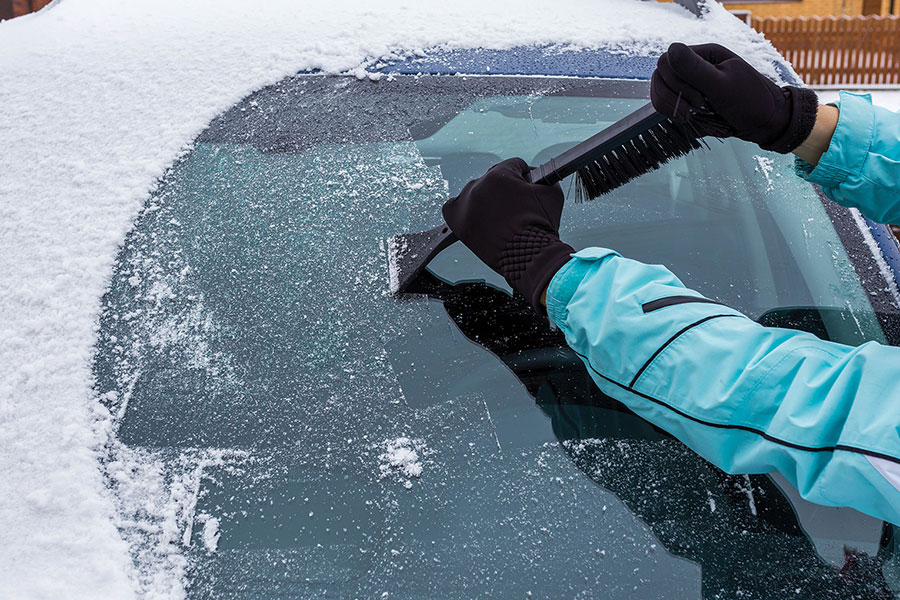WELLINGTON COUNTY – Embracing winter is the Canadian way and getting your car ready for the season of ice, snow and slush helps ensure you can safely get out and enjoy it.
Dustin Hutten, part owner of CSN Hutten Collision Centre, a family-run autobody business in Fergus, has some simple tips for drivers to prepare their vehicle for the winter driving season, and routines they can establish throughout the season to ensure their vehicle is safe on the road.
The first tip is one all drivers should know: put winter tires on your vehicle.
“Winter tires are important. They do make quite a difference. Not just for getting your vehicle going but also for stopping,” Hutten said.
“Anything below seven degrees Celsius, you should be putting winter tires on because the rubber on them is designed for the colder temperatures, even on dry pavement.”
According to CAA, all-season tires are no match for winter tires. All-season tires are designed to work in weather conditions that include the extreme heat of summer. When the temperature falls, the all-season tire rubber can become rigid rather than pliable, which decreases the ability to stop quickly and safely.
On snow, ice or cold pavement, the stopping distance of a car with snow tires can be up to 40 per cent shorter than one with all-seasons.
The winter tire insurance discount is also an incentive to consider, with savings of up to 5% on auto insurance premiums provided by all private insurance companies in Ontario.
With the amount of salt on roads throughout the winter months, Hutten also recommends getting your vehicle rustproofed.
“You should rust proof your vehicle for corrosion protection whether it’s a metal or aluminum vehicle,” he said.
“A lot of vehicles are made of aluminum now so it’s not just steel rust, there’s a little bit of corrosion too.”
Remember when clearing the snow off your car and scraping your windshield was just to clear your view? With newer vehicles and all the technology advancements, clearing your car safely and effectively requires a more careful routine.
“If your vehicle has the lane departure warning system, the camera is mounted behind your vehicle’s windshield, in front of the inside rearview mirror, so that area needs to be de-iced or scraped off before you start driving,” Hutten said.
“Obviously, you’re going to pick up some slush as you go and the wipers don’t go over it, so it’s still going to interfere. But if you get the ice off, at least it’s going to get a better reading.”
Hutten also reminds drivers to clear the front of the vehicles fully, from the headlights to the front-end sensors.
“On your front bumper and grill area, some cars will have what’s called a collision avoidance for a cruise. That’s a distance sensor so it needs to be clear of snow and slush as well,” he said.
“And it’s usually somewhere in the vicinity of the license plate. Just like you’re supposed to clean your plates, you should make sure that area is clear as well, because that’ll do things like automatic braking.”
The same process goes for the back of the vehicle, with extra care for cars that have back-up cameras. With the accumulation of dirt, slush, or snow, cleaning off the sensors will prevent buildup and, of course, keep the camera working effectively.
You can do these things while the car is warming up, which Hutten said should be take a minimum of five minutes.
“Most remote starts are about a 10-minute timeout. But you should at least warm it up for five minutes before you go. Mechanically, it’s better because your engine should warm up,” Hutten said.
“But also, then you’re not going to have your interior fog up when you start driving. You’re best to let your climate control kick in at least warm it up enough for that.”
But, if your windows fog up on the inside of the vehicle and won’t clear fast enough, Hutten says to turn on your vehicle’s air conditioning.
“Turn your air conditioning on and make sure your AC is turned on. And that will reduce the amount of fog up that you have inside,” he said.
“So, it will still work hot. But your air conditioning compressor will kick in and it’s like having a dehumidifier running in your car.”
And finally, while it may seem like an obvious tip, it’s also essential for the safety of you and your car.
“Always have your gas to at least a quarter of a tank,” Hutten said, noting it’s not only good for welfare of the vehicle, but safer for the driver, because in winter conditions where you could be temporarily stranded, you need to be prepared.
Hutten’s autobody shop sees vehicle damage on all makes and models of vehicles and he knows firsthand the ways vehicles are being technologically enhanced to create a safer driving experience.
A bit of winter maintenance and a routine to keep vehicles clear and clean in the winter months will ensure these sensors and devices work at their best to help drivers navigate the roads safely, with confidence.




